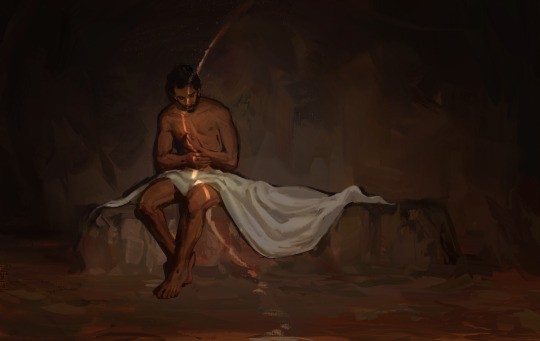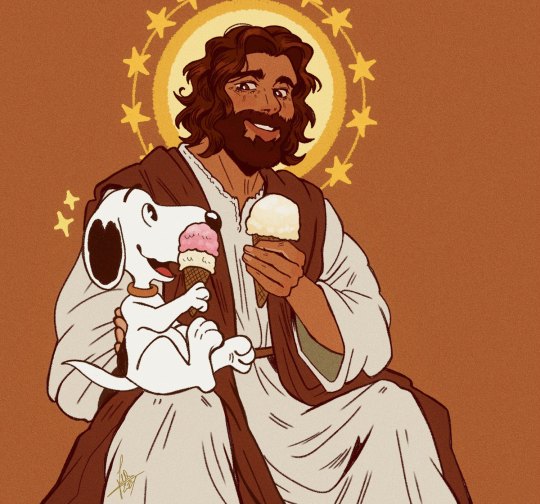#jesus christ
Explore tagged Tumblr posts
Text

He has risen yayy
#before anyone says anything it is 2am sunday my time#art#digital art#wolfy religious tedtalks#bible#jesus christ
14K notes
·
View notes
Text








JUDAS ISCARIOT | Official Trailer
Judas Iscariot is an animated retelling of The New Testament of the Holy Bible, featuring details from the Apocrypha (The "Unofficial" Gospels) with a fresh stylized reinterpretation of the story's core figures. The goal of this project is to illuminate this text for both a religious and non-religious audience, placing it back into the historical context of Jesus’s role as a political figure during the Roman occupation of Judea. This film explores mature themes pertaining to love, devotion, and control. The film is expected to be 15-20 minutes long, depending on how much can be raised with the kickstarter campaign. It is expected to take 1-2 years to finish writing, storyboarding, animating, and painting assets for this project, with an additional period of time devoted to film festival screenings before it is ready for the public. Judas Iscariot will be the second short film written and directed by Charles Kugler, who has worked in the animation industry for clients like Adult Swim, Cartoon Network, and FOX.
Kickstarter campaign link:
#judas iscariot#judas iscariot film#judas iscariot short film#jesus christ#jesus of nazareth#mary magdalene#animation#indie animation#independent animation#gif#my edit#easter#the bible#the holy bible#bible fandom#jesus fandom#art#anthro#anthropomorphic#furry#furries#tw blood
2K notes
·
View notes
Text

“Father, forgive them, for they do not know what they are doing.” - Luke 23:34
sooo… jesus art got me to 10k on twitter😳, here is some more art, i can’t draw wolves, or clothes, or anything really
5K notes
·
View notes
Text


sequel to my other jesus + vocaloid image inspired by confessions of a rotten girl by SAWTOWNE
27K notes
·
View notes
Text



Passing away on the day of Jesus’s resurrection when you’re literally the POPE is some of the most poetic shit i’ve witnessed in a while.
#pope francis#easter#resurrection#art#rip#holistic#jesus#Francisco#papa francesco#jorge mario bergoglio#bergoglio#catholicism#catholic#beautiful#papa francisco#papa#pope#amazing#photography#jesus christ#latin#argentina#tumblr#christianity#Vatican#rome#new era#happy easter#bible
595 notes
·
View notes
Text

Last month's patreon art! Jesus fanarts 🍷
#mine#fanning#jesus christ#my headcanon for JC is that he got gains#bible fanart#i guess#party jesus
2K notes
·
View notes
Text

ENA and Jesus Christ
700 notes
·
View notes
Text
Happy Easter! Here's jesus because I like drawing him

672 notes
·
View notes
Text

Snoopy and Jesus eating ice cream together <3 this was based off a dream I had last night of... literally, Snoopy and Jesus having ice cream together. I dream really random stuff but this had to be one of the top ones if I'm honest. I love Jesus and I love Snoopy so.. yeah!
12K notes
·
View notes
Text

#meme#social media#jesus#tumblr#funny#gracioso#humor#memes#jesus christ#bible#biblia#social media madness
19K notes
·
View notes
Text













Characters & character designs for JUDAS ISCARIOT, developed by animator, Charles Kugler,who has worked in the animation industry for clients like Adult Swim and Cartoon Network
Kickstarter campaign link:
#judas iscariot#judas iscariot film#judas iscariot short film#jesus christ#jesus of nazareth#mary magdalene#concept art#character design#art#easter#the bible#the holy bible#bible fandom#jesus fandom#anthro#anthropomorphic#furry#furries#tw blood#cw gore
699 notes
·
View notes
Text


jesus sensing you spawn into a crowded space 2000 years in the past with a body full of vaccines: God give me strength
#art#christianity#funny stuff happening on twitter rn#comic#my art#jesus christ#these are crazy tags#the bible#get back in the time machine ur gonna start another plague#people trying to teach me how vaccines work: i knowwww it’s a joooke this is tumblr pls be srs
10K notes
·
View notes
Text

#Pope Francis#Jesus Christ#2025#meme#Christianity#Easter#Easter Monday#Resurrection Sunday#V#I'm a bad Catholic#but the fact Jesus' representative on Earth dies a day after we celebrate the former's resurrection doesn't seem like a coincidence.#Catholic church
398 notes
·
View notes
Text

jeebus crinklecross..
i really hope everyone knows about what post I'm talking about and that this is not my original idea
#digital art#fanart#bugsnax#bugsnax grumpus#grumpus bugsnax#jesus#jesus christ#christianity#religion#shitpost#shit post#bugsnax fandom#doodle
158 notes
·
View notes
Text

quick drawing to put into my final haha
3K notes
·
View notes